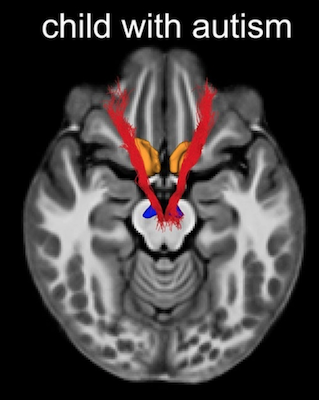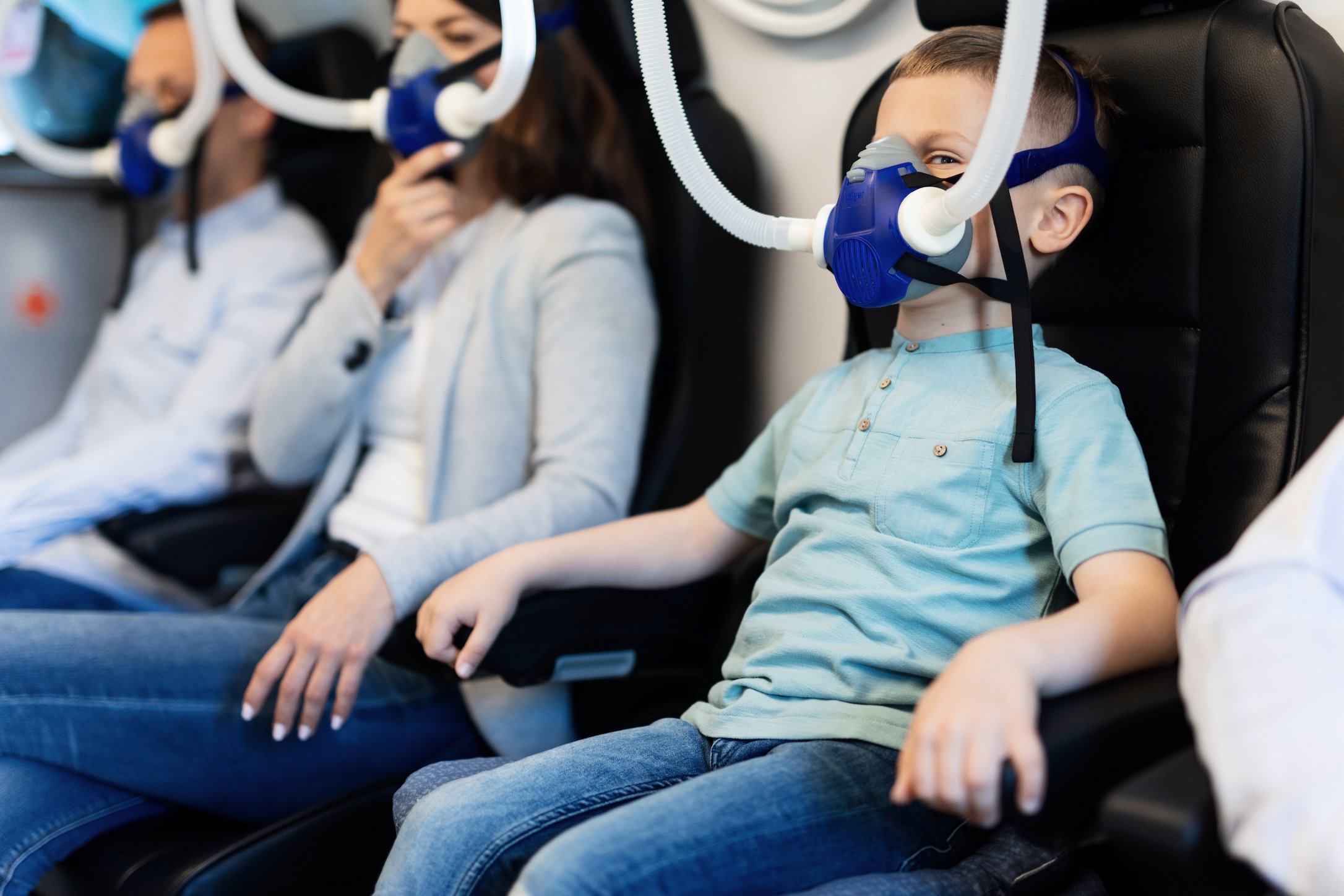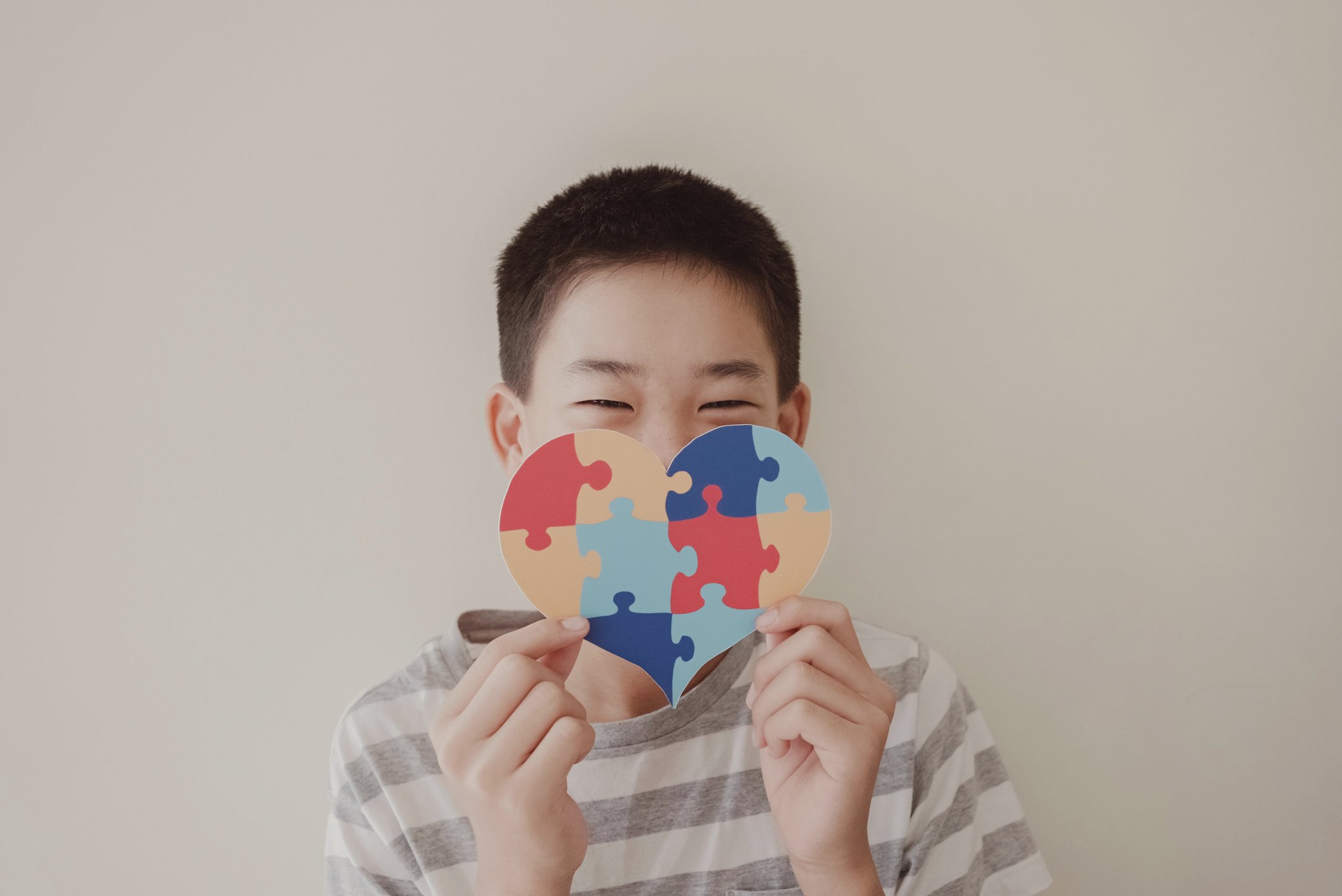
Autism Therapy
Stem Cell Therapy for Autism
Stem Cell Therapy for Autism
About Autism Spectrum Disorder
-
Autism or ASD (Autism Spectrum Disorder) is a complex condition that includes behavioural and communication problems. Autism Spectrum disorder includes a wide variety or range of symptoms that can cause minor to major problems. Individuals with Autism have more difficulty with communication because they cannot comprehend and express the feelings of others. For autistic individuals, it is too difficult to express their emotions through body language, gestures, touch, expressions, and verbal communication. Moreover, autistic individuals can also suffer from learning and cognitive deficits.
-
There are two vital causing factors of Autism:
Environmental factors: These factors may include specific viral infections, pregnancy complications, and medications that can alter the individual's condition. Air pollutants, specific colours, and smells can also trigger the autistic child to behave abnormally
Genetic predisposition: Genetic factors also play a vital role in causing autism in generations. Several genetic mutations are the responsible factors for autism. Genes that affect the working of brain cells also determine the incidence of autism in the coming generations.
-
The most common risk factors for ASD may include:
Gender of the individual: Males (boys) are more prone to develop these disorders in comparison to females.
Family history or genetic inheritance: As discussed earlier, families having a history of one autistic child have more chances of having more patients in the future. These children may behave differently in terms of their social interaction, communication, engagement with others, and emotional exposure.
Preterm birth: Babies who are born before 26 weeks have more tendency to develop neurological and psychological problems. 26-weeks’ gestation birth puts a baby at higher risk of developing autism.
Parental age: Older parents can be another significant factor for their offspring to be autistic.
-
You can find out the symptoms of Autism in your children even at a younger age. Some children can show their signs at 3 years of age.
The most prevalent signs and symptoms of Autism are:
Insufficient eye contact
Limited activities and interests in hobbies
A habit of repeating a specific activity multiple times at one time
High sensitivity or irritability to the sound, sights, smells, and touches. These individuals have more than ordinary sense for such stimuli. Therefore, the therapy room of autistic children focuses on their lightning and colours to not frighten the patients.
Lack of attention span and not giving attention to other people
Problems with understanding body language, gestures, and verbal communications
Difficulty with adapting a specific habit and hobby
A robotic sense of expressions, tone, voice, and talking pattern of the patient
Avoidance to cuddle or hug anyone due to their psychological triggers
The Treatment Journey
-
There is no permanent treatment for Autism. However, doctors pay attention to modifiable symptoms and problems to improve the patient's quality of life—the treatment goal for autistic patients is maximizing the child’s ability to move and work in society.
Early diagnosis and treatment of the autistic child can help in the long run compared to late treatment.
Most of the time, the primary form of treatment of Autism is Applied Behavioral Analysis or ABA; as well as other forms of behavioral therapy, like:
Family therapies
Educational therapies
Communication and behavioural therapies
Speech and occupational therapies for learning and perception
Medications as antipsychotic drugs control the hyperactivity of the child. Antidepressants and anti-anxiety drugs can also help these individuals in gaining control over their irregular emotions.
-
Stem Cell Therapy is gaining fame by becoming an extraordinary treatment approach for autistic patients.
Stem Cell Therapy helps reverse the specific abnormalities by administering hyperbaric oxygen, multipotent cells, anti-inflammatory agents, and antibiotics.
Autism has different categories in terms of severity. Stem Cell Therapy helps treat autistic children with mesenchymal and umbilical cord-derived tissues. The degree of autism and its severity are closely associated with the TARC (Thymus Activation-Regulated Chemokine) and MDC (Macrophage-Derived Chemokine). Intravenous administration of the MSCs derived from the umbilical cord has considerable clinical evidence for decreasing inflammation and alleviating Autistic symptoms.
Stem cells therapy helps with Autism at the neurological level by:
Stopping the progression of the abnormalities in terms of growth and behaviour
Promoting social interaction, interpersonal skills, and communication
Improving the abnormal behaviours as anxiety, ADHD (Attention Deficit Hyperactivity Disorder), depression, solitude, and loneliness in a child
Reducing the pro-inflammatory responses and showing tolerability to the body
-
According to the clinical literature, Exosomes combined with MSCs help in autoimmune diseases by regulating the inflammatory cytokines, microenvironment, and immune cells. These processes have a potent relation with both adaptive and innate immune cells. In these cells, macrophages, Treg cells, Th17, immunoregulatory miRNAs, and CD4+Th1 are the most crucial ones.
Exosomes-combined-MSCs help in the regulation of T-Cell subsets in cases of autoimmune diseases. Moreover, the MSCs-Exosomes also aid in reducing the levels and concentration of pro-inflammatory Th17 and TH1 cytokines as IL-17AF, IL-12p70, and IL-6. However, the same MSCs-Exosomes help in increasing the concentration of anti-inflammatory Treg.
Therefore, MSCs-Exosomes increase the concentration of Treg cells and the related products without changing the concentration index of the lymphocytes to maintain immunoregulation in the body. Similar effects of these cells are seen in the cases of RA (rheumatoid arthritis) and GVHD (graft-versus-host disease). MSCs-Exosomes help improve the GVHD by suppressing the differentiation of populations of the naïve T-cells. Macrophages constitute a crucial and major portion of the innate immunity of the human body, which can be regulated through the administration of MSCs-Exosomes. According to the different microenvironments, Mo (naïve macrophages) can be polarized into anti-inflammatory (M2) or pro-inflammatory (M1) to play different roles in different conditions. Along with the autoimmune conditions, this combination therapy can also help facilitate metabolic hemostasis to attenuate obesity and adipose inflammation. Moreover, MSCs-Exosomes can also promote the M1-M2 macrophage conversion to reduce the pro-inflammatory factors or effects of the macrophage M1.
-
At Renue we believe that if you are truly interested in Healthspan (Living better, not just longer.”) then it’s important that we are aware of our Biological Age vs Chronological Age. Remember you can”t measure success without a starting point. With TruDiagnostic’s TruAge testy you will receive 9 personalized Epigenetic Health Scores and actionable insights to slow aging
Biological Age
How old your body is compared to your real age
Pace of Aging
How quickly you're aging each year
Organ System Ages
The age of key organs (heart, brain, liver, etc.)
Fitness Age
Your physical health based on strength, lung capacity, and movement
Smoking Impact
How smoking has affected your epigenetic age
Alcohol Impact
How alcohol consumption has influenced your health
How is the treatment at The Renue Medical Centre different?
The Stem Cell Therapy (SCT) at The Renue Centre is a holistic approach to treating Autism Spectrum Disorder.
Your Renue Journey does not end after your last day of SCT. We follow up with you to assert your progress, following four phases:
Pre-treatment: Clinical evaluation, lab test results, and other diagnostic procedures
You will take our Renue Epigenetic Test powered by TruDiagnostics that will assert your biological age and other important health markers. Your TruDiagnostics test is part of The Renue Difference. It provides your doctor with critical information about your health and your true age (biological vs. chronological).
After the epigenetic test and we have received all your medical records, your Patient Advisor will assist you in planning your travel to Puerto Vallarta.Treatment day: On the treatment day, a specific amount of blood is taken through apheresis to activate the stem cells for administration. A total of 250 million umbilical cord-mesenchymal stem cells are inserted in the two sittings through the IV route.
30, 60 & 90 days after the treatment: To check for flare-up frequency, improvements, and other symptoms
Six months after treatment: Lab tests, flare-up frequency, clinical evaluation, and disease prognosis
Your Treatment Journey
Experience The Renue Difference in Puerto Vallarta
Arrival Day
Upon arrival in Puerto Vallarta, a Renue representative will meet you at the airport in one of our Mercedes vans to transport you to the hotel.
Our representative will quickly review your schedule for the coming days for your peace of mind. Renue makes it worry-free, so don't worry!
Evening
You travelled all this way, so would you like to check our list of recommended restaurants? We can make reservations for you to enjoy the great food and warm atmosphere of Puerto Vallarta.
Check out the Renue chauffeur for recommendations, reservations, leisure activities, and your transportation needs.
Day 1. Enjoy The Renue Difference.
A better life starts now!
-
Count on your Renue Advisor and staff to help you have a pleasant experience. Our Renue chauffeur will pick you up from the hotel and take you to The Renue Medical Centre in the Joya Hospital. Our staff will welcome and assist you at the Centre.
Our staff will check you in at the Centre and take you on a tour of the facilities, including The Renue Laboratory, where your Stem Cells and Exosomes are produced. You will also visit the Hyperbaric Chamber facility, an essential part of The Renue Difference.
After your check-in, our medical associates will proceed with any necessary blood work or tests organized by your Patient Advisor.
After that, you will meet with your doctor to review your file. Then, he will make any adjustments to your treatment schedule submitted by your Renue Patient Advisor.
Once your doctor has reviewed your file, additional testing might be required—for example, X-Rays, MRIs, and others.
After that, you will have your first Hyperbaric Oxygen Therapy (HBOT) session.
Following your first treatment session, our Renue chauffeur will return you to your hotel.
Evening
Do you have any plans for the evening? Or maybe you would need a chauffeur?
Remember that relaxation can improve your health, too. Ask our Renue chauffeur for suggestions. They know the places to go in Puerto Vallarta.
Day 2. Now you're a pro!
Treatment Day & Second Hyperbaric Session
-
Our Renue chauffeur will pick you up according to the schedule and take you to The Renue Centre.
The medical team will welcome you and start your treatment for Autism as soon as you arrive:
200 Million Stem Cells IV*
25 Million Nebulized*
25 Million Intrathecal*
16 Billion Exosomes*
*The actual quantity of Stem Cells depends on the patient’s body weight and severity of the disease
Then, after your treatment and second Hyperbaric Chamber session, the Renue chauffeur will return you to the hotel.
Evening
Puerto Vallarta is a beautiful place; we suggest you don't miss out and enjoy your stay. You know it: ask our Renue Concierge for suggestions and have fun!
Day 3 and 4. You're almost done
The third and fourth Hyperbaric sessions make a difference!
-
Our Renue chauffeur will pick you up according to the schedule and take you to The Renue Centre.
Your scheduled treatment will start as soon as you arrive.
Then, after your treatment and second Hyperbaric Chamber session, the Renue chauffeur will return you to the hotel.
Evening
Your Renue Journey allows you to explore all that Puerto Vallarta has to offer.
Ask our Renue chauffeur for suggestions, and remember to enjoy yourself.
Day 5. Departure or extended stay?
It's not over yet.
-
Our Renue chauffeur will pick you up from the hotel. Then, they will take you to the airport or another treatment according to your schedule.
However, maybe you would like to extend your stay and your wellness holiday because Puerto Vallarta is stunning!
Talk to our Renue chauffeur. Our team will contact you to confirm all details: tours, restaurants, and other treatments you would like to have.
Are you going to miss us?
Don't forget our follow-up treatments. Talk to your Patient Advisor:
Post-treatment:
30, 60 & 90 days follow-up: Autism Spectrum Disorder symptoms clinical evaluation, flare-up frequency, and lab test results.
Six months post-treatment: ASD symptoms clinical evaluation, flare-up frequency, lab test results, X-ray report, and review of the diagnostic criteria.
Expected Results
SCT to live a better life: Benefits and outcomes
The effectiveness of Stem Cell Treatment can improve all your symptoms, causing a considerable impact on your quality of life and daily activities.
As part of The Renue Difference, you will receive three Hyperbaric Chamber sessions that greatly improve SCT efficacy and stimulate the body cells to combat Autism Spectrum Disorder (ASD). These sessions comprise three days: one day before treatment, after treatment, and on the day of treatment.
According to results, clinical outcomes, and pre- and post-treatment observations, SCT has been shown to help
Reduce ADs progression
Speed up tissue repair
Regrow and repair tissues after six months
After the SCT procedure, an MRI test depicts the further need for the treatment at a specific body site.
Talk to our Patient Advisor to learn more about SCT at The Renue Centre.
Expected results and prognosis:
Expected result 1: After the single infusion, you can expect a significant improvement in the behaviour and conduct of a child
Expected result 2: More independence in ADLs and IADLS, mobility, coordination, and gait after six months of injection. Clinicians claim the maximum benefit in children between 2-5 years of age after the initial six months
Expected result 3: Increased independence, more life satisfaction, decreased neuro damage progression, reduced memory decline, and overall positive effects
FAQ’s
-
The Stem Cell Therapy risks are low and infrequent because of the therapy’s high safety domain.
The most expected or common risk factors of SCT can be:
Fever
Pain in throat and mouth
Graft-versus-host disease (in rare cases)
Painful injection area /site
Lethargy and fatigue
Allergic reactions
-
Allergic reactions are preventable through pre-injection history and care. Fatigue, fever, and pain are managed through the appropriate drugs along with the treatment. Graft-versus-host disease is preventable via careful administration and a high-quality treatment regimen.
Autism is a complex disorder with a combination of different symptoms making the patient vulnerable to different problems. With the invention of Stem Cell Replacement Therapy, parents have been more confident and hopeful for the good prognosis of their children. Stem Cell Therapy has the potential to be more effective than previous methods and also carries less risk. At present, stem cell technology is still in the developmental stage, but rapid developments and advances indicate its potential uses for the treatment of autism.
Research Articles
Take a look to the following articles & literature about Autism:
The benefits and effects of Stem Cell Therapy depend on several factors: the patient's health condition, underlying issues, lifestyle, and others. To assess your expected results, we would like to know more about you. A medical advisor will talk to you about your diagnosis and treatment options and collect information for the attending physician; they can answer all your initial questions:
Will the therapy work for my case?
What does the treatment involve? Is it painful?
Is it expensive? How much does it cost?
Start your Wellness Journey!
Click on the button below to book a consultation to answer your questions and discuss your medical history, your treatment journey, and your goals.







